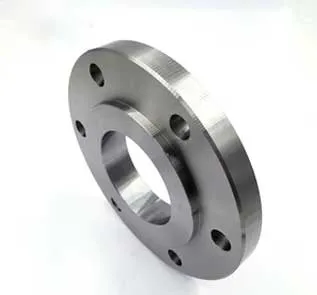-
Cangzhou Yulong Steel Co., Ltd.
-
Phone:
+86 13303177267 -
Email:
admin@ylsteelfittings.com
- English
- Arabic
- Italian
- Spanish
- Portuguese
- German
- kazakh
- Persian
- Greek
- French
- Russian
- Polish
- Thai
- Indonesian
- Vietnamese
- Zulu
- Korean
- Uzbek
- Hindi
- Serbian
- Malay
- Ukrainian
- Gujarati
- Haitian Creole
- hausa
- hawaiian
- Hebrew
- Miao
- Hungarian
- Icelandic
- igbo
- irish
- Japanese
- Javanese
- Kannada
- Khmer
- Rwandese
- Afrikaans
- Albanian
- Amharic
- Armenian
- Azerbaijani
- Basque
- Belarusian
- Bengali
- Bosnian
- Bulgarian
- Catalan
- Cebuano
- China
- China (Taiwan)
- Corsican
- Croatian
- Czech
- Danish
- Esperanto
- Estonian
- Finnish
- Frisian
- Galician
- Georgian
- Kurdish
- Kyrgyz
- Lao
- Latin
- Latvian
- Lithuanian
- Luxembourgish
- Macedonian
- Malgashi
- Malayalam
- Maltese
- Maori
- Marathi
- Mongolian
- Myanmar
- Nepali
- Norwegian
- Norwegian
- Occitan
- Pashto
- Dutch
- Punjabi
- Romanian
- Samoan
- Scottish Gaelic
- Sesotho
- Shona
- Sindhi
- Sinhala
- Slovak
- Slovenian
- Somali
- Sundanese
- Swahili
- Swedish
- Tagalog
- Tajik
- Tamil
- Tatar
- Telugu
- Turkish
- Turkmen
- Urdu
- Uighur
- Welsh
- Bantu
- Yiddish
- Yoruba

Nov . 28, 2024 00:41 Back to list
Understanding ANSI Threaded Flanges and Their Applications in Industrial Settings
Understanding ANSI Threaded Flanges
Flanges are integral components in piping systems, serving as a means of joining two components, typically pipes, valves, or pumps. Among various types of flanges, ANSI (American National Standards Institute) threaded flanges play a crucial role in ensuring secure, leak-free connections. This article explores the significance, characteristics, and applications of ANSI threaded flanges.
What is an ANSI Threaded Flange?
ANSI threaded flanges are circular discs with a hole in the center that is designed to fit over the end of a pipe. The defining feature of ANSI threaded flanges is that they have internal threads that correspond to the external threads of a pipe. This threaded design allows for a mechanical connection that can be tightened to create a seal. The ANSI standard provides guidelines for the dimensions, materials, and tolerances of these flanges, ensuring consistency and compatibility in various industrial applications.
Characteristics of ANSI Threaded Flanges
1. Materials ANSI threaded flanges are manufactured using various materials, including carbon steel, stainless steel, and alloy steels. The choice of material typically depends on the application demands, including temperature, pressure, and the corrosive nature of the fluids being transported.
2. Size and Pressure Ratings ANSI flanges are available in several sizes and pressure ratings, typically classified according to the ANSI/ASME B16.5 standard. Common pressure classes include 150, 300, 600, and 1500, which indicate the maximum pressure that the flange can handle at a given temperature.
3. Design ANSI threaded flanges typically have a smooth face or a raised face, depending on the sealing requirements. The design facilitates the application of gaskets to ensure a tight seal when bolted to another flange or fitting.
4. Installation and Maintenance One of the advantages of threaded flanges is their ease of installation. They can be easily screwed on and off, making maintenance and modifications to piping systems more straightforward. However, it's essential to ensure proper alignment and torque specifications to prevent leaks and damage.
Applications of ANSI Threaded Flanges
ansi threaded flange

ANSI threaded flanges find extensive use across numerous industries
1. Oil and Gas In the oil and gas sector, threaded flanges are crucial in production, transportation, and processing operations. They are often used in systems handling high-pressure fluids, where a reliable seal is paramount.
2. Chemical Processing The chemical industry frequently employs ANSI threaded flanges due to their ability to handle corrosive materials. The choice of material can be tailored to resist specific chemicals, ensuring longevity and operational efficiency.
3. Water Treatment In water treatment facilities, ANSI threaded flanges are utilized in various applications, including piping systems and equipment connections, thanks to their reliable sealing capability and ease of maintenance.
4. Manufacturing Many manufacturing processes rely on threaded flanges for the connection of machinery and equipment, where frequent adjustments and maintenance are necessary.
Advantages and Disadvantages
While ANSI threaded flanges offer numerous advantages, such as ease of installation and maintenance, they are not without drawbacks. One potential disadvantage is that threaded connections can be less effective in high-pressure applications compared to welded connections, as they may be more prone to leakage under extreme conditions.
Conclusion
In conclusion, ANSI threaded flanges are a vital component in various piping systems and industries, offering a robust solution for connecting pipes and other equipment. Their standardized design ensures compatibility and reliability, while their threaded mechanism simplifies installation and maintenance. Understanding the characteristics and applications of these flanges is crucial for professionals in the field, as it allows for better decision-making in the design and operation of piping systems. As industries continue to evolve, so too will the standards and technologies surrounding threaded flanges, ensuring their ongoing relevance in modern engineering applications.
Latest news
-
ANSI 150P SS304 SO FLANGE
NewsFeb.14,2025
-
ASTM A333GR6 STEEL PIPE
NewsJan.20,2025
-
ANSI B16.5 WELDING NECK FLANGE
NewsJan.15,2026
-
ANSI B16.5 SLIP-ON FLANGE
NewsApr.19,2024
-
SABS 1123 FLANGE
NewsJan.15,2025
-
DIN86044 PLATE FLANGE
NewsApr.19,2024
-
DIN2527 BLIND FLANGE
NewsApr.12,2024
-
JIS B2311 Butt-Welding Fittings LR/SR 45°/90° /180°Seamless/Weld
NewsApr.23,2024











